The USAID and NREL Quarterly Newsletter
February 2022 Edition
In this edition, learn about new global investments in renewable energy, journey through research developments to decarbonize South Asia, meet an NREL team member, and more.
Subscribe to receive this newsletter via email.
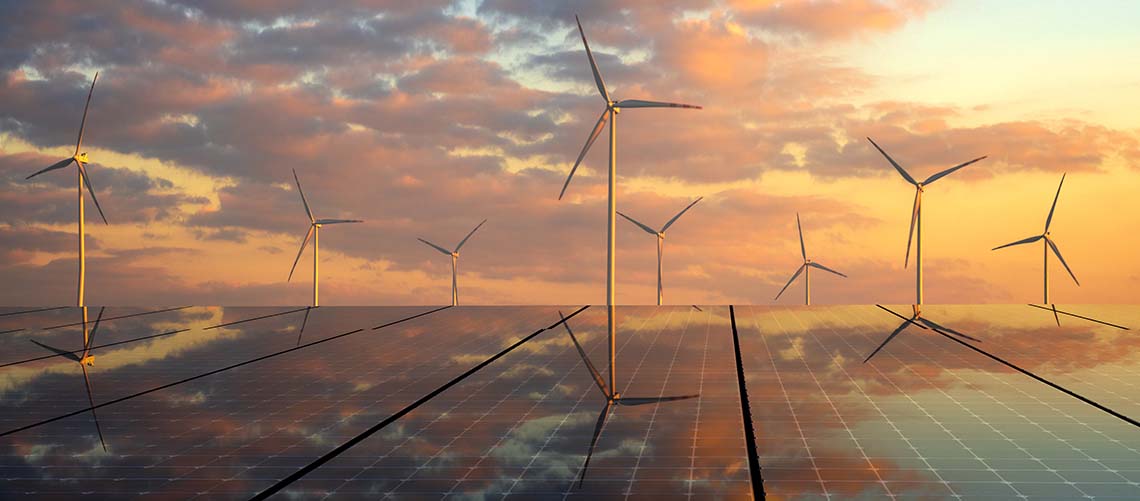
Contents
The Time Is Now To Decarbonize and Deploy Climate-Resilient Energy Systems
Road To Net Zero: USAID To Increase Global Investments in Renewable Energy and Energy Efficiency
The South Asia Group for Energy Presents Pathways To Decarbonize South Asia
PVWatts Goes International: Tool Upgrades Include Southeast Asia Data
The Time Is Now To Decarbonize and Deploy Climate-Resilient Energy Systems
USAID extends decade-long collaboration with NREL and the U.S. Department of Energy (DOE) laboratory network under a new partnership agreement focused on promoting net-zero, resilient, and inclusive energy systems to address the climate crisis.
To abate consequences posed by the global climate crisis, governments, utilities, and businesses around the world must urgently deploy clean, affordable, and reliable energy technologies and systems at an unprecedented pace over the next decade. An equitable, diverse, and efficient energy supply avoids or reduces emissions and helps countries achieve their climate targets while ensuring energy independence and bolstering resilience to changing climate conditions, price volatility, and conflict. Accelerating global efforts to achieve inclusive, net-zero energy systems is essential to improve educational and economic opportunities, strengthen local communities, and secure a livable planet for all.
Recognizing the need for comprehensive technical assistance to support clean energy pathway development and the deployment of advanced clean energy systems, USAID, NREL, and other DOE national laboratories are strengthening their commitment to provide both targeted and cross-cutting support to USAID's partner countries around the world. Through the launch of a new agreement, USAID will have continued access to world-class technical energy system expertise via NREL and the DOE national laboratory network and be able to apply these resources strategically to advance partner country priorities in energy and related sectors. The underlying goal of this new agreement is to build on the accomplishments of the current USAID-NREL Partnership to ensure the best U.S. technical expertise is being leveraged to support global efforts to scale up advanced clean energy systems, decarbonize economies, combat and adapt to climate change, and ensure a just energy transition for all. The new agreement will include a strong focus on energy efficiency while moving beyond the power sector to offer support in transportation and industry-focused activities as well as cross-cutting activities such as workforce development, cybersecurity, urban energy systems, and energy access.
We anticipate the new agreement will commence by April 2022 and will be available for USAID Mission buy-ins to fund country-specific and regional activities implemented by NREL and other laboratories in the DOE national network. To learn more about the new agreement, please contact me directly at jfoster@usaid.gov.

Jeremy Foster
Senior Energy Advisor
Center for Environment, Energy, and Infrastructure
U.S. Agency for International Development
What's New
Road To Net Zero: USAID To Increase Global Investments in Renewable Energy and Energy Efficiency
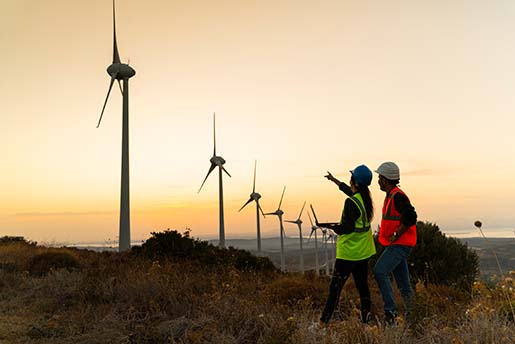
Image from iStock
To reach net-zero emissions by 2050, the International Energy Agency calculated that clean energy investment in developing countries needs to expand by at least a factor of seven, to above $1 trillion per year by the end of the 2020s. Last year, USAID and NREL conducted a short-term assessment of potential areas where USAID could strengthen its climate finance—the provision or mobilization of financial resources to assist developing countries in reducing greenhouse gas emissions—for clean energy programming. The assessment involved analyzing current trends, with a particular focus on the impacts of the COVID-19 pandemic and the correlating economic downturn, along with interviews and a stakeholder workshop.
The assessment made several cross-cutting recommendations that USAID could consider as it updates its climate finance for clean energy and energy efficiency strategy. Most of these higher-level insights affect program implementation, and many could inform areas of USAID's climate finance strategy beyond clean energy.
USAID and NREL are hosting a webinar exclusively for USAID staff on March 16, 2022, about climate finance opportunities for USAID energy sector programming that will highlight the findings presented in NREL's assessment. Register for the webinar.
Read the assessment primer: Mobilizing Climate Finance for Clean Energy and Energy Efficiency Investments: A Primer for Integration into USAID Energy Sector Activities.
Read the full assessment report: Assessment of Opportunities for USAID to Deepen Climate Finance Support for Renewable Energy and Energy Efficiency in Developing Countries.
Joint Workforce Development Initiative Is Lowering Barriers for Women Leaders in Power System Operations
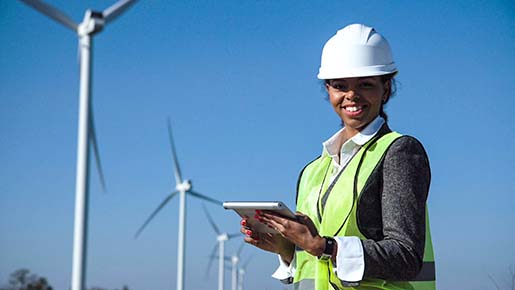
Image from iStock
Although women make up half of the worldwide workforce potential, they are often underrepresented in power sector technical and leadership roles. The Women in Power System Transformation initiative—formally launched at the 2021 United Nations Climate Change Conference, funded by USAID, and implemented through NREL and the Global Power System Transformation Consortium (G-PST)—was created to address educational and professional barriers to women's entry and advancement in power system operation organizations.
Through this initiative, Imperial College London, a partner of the G-PST Consortium, is leading the development of university-level engineering training curriculum due to be completed within the coming months and made available at no cost to university professors and students around the world.
The initiative also includes university internship and professional fellowship components targeted to women and other underrepresented groups in developing countries. Student interns will work closely with NREL researchers on cutting-edge power systems analyses and clean energy integration activities to strengthen critical technical skills while gaining firsthand experience managing and operating high-renewable energy grids. At the conclusion of their internship, students will bring knowledge and analysis and research skills back to their home countries to help their institutions and organizations strengthen and diversify the workforce to tackle the enormous challenge of shifting the world's power supply to clean energy sources. The first round of internships will begin in June 2022.
To get involved in the program or nominate a university to engage in the Women in PST program, send inquiries to USAID.NREL@nrel.gov.
Read the full article: Joint Workforce Development Initiative To Advance Leadership Opportunities for Women in Power System Operations.
Read the fact sheet: Women in Power System Transformation.
The South Asia Group for Energy Presents Pathways to Decarbonize South Asia

Image courtesy of iStock
South Asia is poised to play a major role in global decarbonization. Although the
region is experiencing significant growth in emissions from increased economic development
as new buildings, factories, and vehicles are driving demand for energy, it has still
pledged a low-carbon future through national commitments and policies within different
sectors.
The South Asia Group for Energy (SAGE)—a multilab consortium composed of energy-sector
experts from USAID, NREL, Pacific Northwest National Laboratory, and Lawrence Berkeley
National Laboratory—is partnering with South Asian governments to enable sustainable
energy development in the region. In January 2022, the first phase of SAGE's work
concluded with a series of assessments outlining the research, modeling, and implementation
pathways available to enable decarbonization of South Asia's power, transportation,
and industrial sectors while improving system reliability and resilience. Explore
SAGE's resources below.
Reliability, Resilience, and Sustainability in South Asia's Power Sector
Integrating Climate Impacts into Power System Planning in South Asia
Reliability and Resiliency in South Asia's Power Sector
A Comprehensive Economic Coal Transition in South Asia
Air Quality Analysis and Tools for Policy
Decarbonization Series
Pathways for Decarbonization of South Asia's Transportation Sector
Power Sector Decarbonization in South Asia – Pathways for Research, Modeling, and Implementation
Modeling and Policy Pathways To Decarbonize South Asia's Industrial Sector
To further share this research, SAGE hosted a webinar on Jan. 27, 2022, titled Decarbonization in South Asia – Perspectives on the Electricity Grid, Industry, and Transportation. The webinar presented the challenges and potential solutions for decarbonization of the electric grid, industry, and the transport sector and summarized work from three of its recently published reports.
Read about the DOE interlaboratory approach for SAGE in an NREL news article.
PVWatts Goes International: Tool Upgrades Include Southeast Asia Data
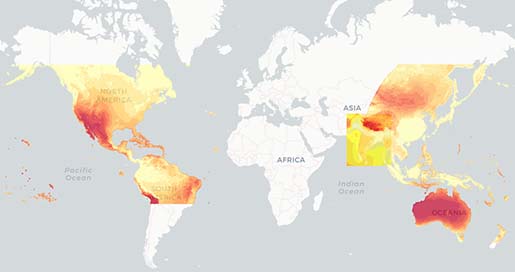
Illustration showing solar resource data across North America, South America, Eastern Asia, and Oceania.
NREL's PVWatts Calculator, a free online application that estimates the energy production of grid-connected photovoltaic (PV) systems, has been updated to include solar resource data for Southeast Asia. This addition means that the application now covers North and Central America, northern South America, and South Asia. For locations outside of these areas, PVWatts suggests a weather file for a discrete site as close as possible to the requested location.
PVWatts allows homeowners, installers, developers, and manufacturers all over the world to make quick and accurate performance estimates for PV installations.
To learn more about the Southeast Asia solar resource dataset and how it was developed, explore the published slide deck: Development and Validation of Southeast Solar Resource Data.
Advancing Energy Efficiency in Uganda
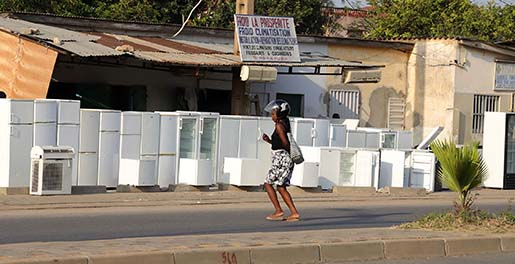
USAID's Energy Efficiency for Development (EE4D) program and Uganda's Ministry of Energy and Mineral Development hosted a virtual stakeholder consultation workshop on Feb. 11, 2022, to discuss standards and labeling for refrigeration products and to share the findings of a cost-benefit analysis developed by Lawrence Berkeley National Laboratory. The event—attended by 44 participants representing the public, private, and nongovernmental sectors in Uganda—included an overview of the energy efficiency landscape in the country, background and implementation strategy for the Standards and Labeling project supported by EE4D, regional harmonization models for energy efficiency regulations, and the results of the cost-benefit analysis, including market assessment, consumer impacts, national impacts, and recommendations. The activity provided the opportunity to engage with a variety of stakeholders and will inform subsequent stages of the project.
Learn more about the EE4D project in Uganda.
Strengthening Power Sector Cybersecurity Defense Programs in the Caribbean
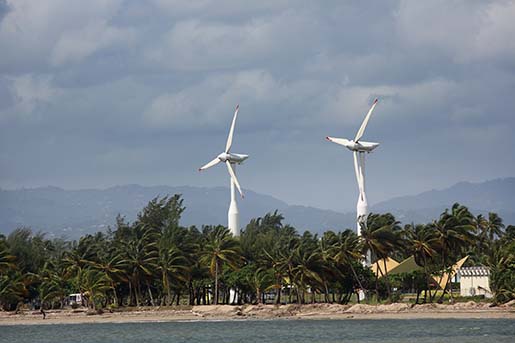
Image from iStock
Experts from USAID, NREL, Deloitte, PNM Resources, the Caribbean Electric Utility Services Corp., and the St. Kitts Electricity Co. came together to share insights, experiences, and key considerations for creating organizational security policies—or in other words, the central document that captures a utility's approach to cybersecurity, identifies regulatory requirements and business decisions, and serves as the cornerstone of the utility's cybersecurity program. The webinar, which ties into the ongoing Power Sector Cybersecurity Building Blocks webinar series, covered how to structure an organizational security policy, how utilities can create and update their own security policy, what data and resources are needed to develop the policy, and how the policy can be operationalized to improve cybersecurity.
The organizational security policy is one of 11 essential elements for a utility cybersecurity program as identified in the Power Sector Cybersecurity Building Blocks, developed through the USAID-NREL Partnership's Resilient Energy Platform. The goal of the Power Sector Cybersecurity Building Blocks webinar series is to raise awareness about all aspects of security, help utilities develop a well-rounded cybersecurity program, and address critical infrastructure needs in the Caribbean. A webinar recording is forthcoming.
Check out the Power Sector Cybersecurity Building Blocks on the Resilient Energy Platform to learn more, access the toolkit, and watch previous webinars in the series.
Ongoing Learning Series Introduces Guidebook to Distributed Photovoltaics Revenue and Retail Tariff Impact Analysis
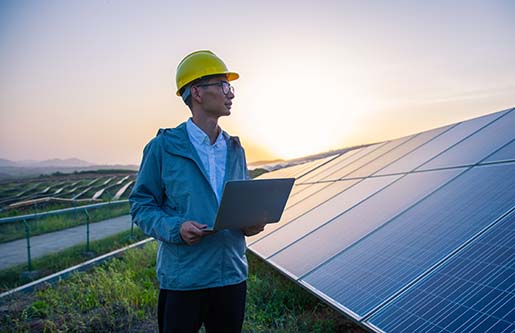
Image courtesy of iStock
The Asia EDGE Power Sector Learning Series, presented by USAID's Southeast Asia Enhancing Development and Growth Through Energy Hub and NREL, offers free, virtual training on power sector planning, resilience, grid integration, and power sector modernizations to professionals all over the world.
In December 2021, the Power Sector Learning Series launched a webinar highlighting the Partnership's Distributed Photovoltaic (DPV) Revenue and Retail Tariff Impact Analysis Guide. Researchers and grid planners shared the purpose of conducting such analyses, communicated key considerations, and examined several analyses from Southeast Asia that could be useful to governments and organizations contending with opportunities and challenges associated with the increased adoption of customer-sited DPV.
As customer-sited DPV proliferates worldwide, associated technical, economic, policy, and market-related factors affect stakeholders differently. Quantifying the net positive or negative financial impacts DPV may have on utility providers and ratepayers informs DPV policy and program decisions as decision makers aim to strike an acceptable balance between ratepayer protections, DPV market development, and other public policy objectives.
Watch the webinar recording on YouTube.
Read the DPV Revenue and Retail Tariff Impact Analysis Guide.
Team Spotlight
Meet Nathan Lee
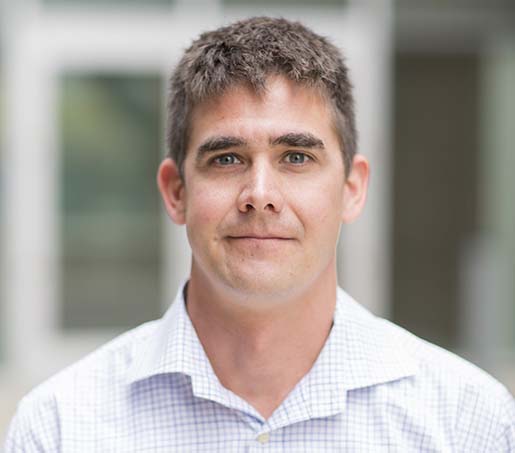
Tell us about your role on the USAID portfolio.
I am the technical lead for the USAID-NREL Advanced Energy Partnership for Asia. In this role, I provide strategic direction for NREL's support for counterparts under this partnership in the region. I work closely with NREL's USAID portfolio manager, the USAID Regional Development Mission for Asia USAID Missions, partner institutions, and host country counterparts to identify opportunities where NREL and the broader DOE laboratory capabilities can support energy transition challenges in the region.
What inspired you to work on international projects?
I came to NREL specifically to support international energy sector projects as I was completing my Ph.D. I became interested in supporting international energy planning and decision science years ago when I was a Peace Corps volunteer in the West African country of Cape Verde. I saw so many developing countries that wanted to reduce greenhouse gas emissions, decrease energy costs, and increase energy access. However, these ambitions present many challenges, and that's what I decided I would devote my life and work to. I'm concerned about sustainable energy use and climate change as it impacts all people, the planet, and ecosystems. It's a problem that needs solving now so that future generations throughout the world will have a thriving planet to live on.
What excites you most about the work that you're doing?
I enjoy taking clean energy and energy transition questions out of the theoretical world and into the actual work of deployment to understand the challenges that implementers actually have to address. I hit my stride when leading diverse teams to translate ill-constructed, ambiguous energy sector challenges faced by governments, utilities, and companies around the globe into tangible projects that support global clean energy transitions. Finally, I love meeting with our partners and learning about the amazing strides they are making toward clean energy transitions. I am constantly amazed, excited, and motivated by all the brilliant and determined clean energy actors we work with all over the world and look forward to being able to travel and reenergize these relationships!
Tell us a fun fact about yourself or what you like to do outside of work.
I am fluent in Cape Verdean Creole, a Portuguese-based creole, which I speak at home with my partner (a native speaker) and our 8-month-old daughter, together with Portuguese and English! We are lucky enough to count beautiful Cape Verde and Portugal as our second/third homes, and although we love exploring the mountains of Colorado, we have a deep passion for the ocean/beach life (a.k.a. thalassophiles)!
In what ways does your work accelerate the deployment of sustainable, advanced energy systems around the world?
Our counterparts around the world are taking on some of the most exciting, ambitious energy transitions ever; however, these transitions come with many challenges. As the lead for our work in Southeast Asia with USAID, I work closely with partner countries to structure an approach to address these problems and connect laboratory experts that can leverage DOE investment to provide transformation resources and guidance to address diverse energy transition challenges and offer state-of-the-art practices to deploy advanced energy systems. Additionally, understanding the challenges that our partners face and the novel solutions they deploy offers an opportunity to feed knowledge back into the research, development, and deployment loop to accelerate deployment globally!
Stay Current
Explore all December 2021–February 2022 publications, events, and resources below.
Free Trainings
Upcoming Trainings
Wednesday, March 16 at 9 a.m. EST: Climate Finance Opportunities for USAID Energy Sector Programming
Recordings of Previous Trainings
Decarbonization in South Asia – Perspectives on the Electricity Grid, Industry, and Transportation, January 2022
Analyzing Distributed PV Utility Revenue and Retail Tariff Impact, December 2021
Must Reads
International Jobs and Economic Development Impacts Model: Stories of Use and Impact, February 2022
Reliability and Resiliency in South Asia's Power Sector, February 2022
Air Quality Analysis and Tools for Policy, January 2022
A Comprehensive Economic Coal Transition in South Asia, January 2022
Integrating Climate Impacts into Power System Planning in South Asia, January 2022
Development and Validation of Southeast Asia Solar Resource Data, January 2022
Modeling and Policy Pathways to Decarbonize South Asia's Industrial Sector, January 2022
Pathways for Decarbonization of South Asia's Transportation Sector, January 2022
Power Sector Decarbonization in South Asia – Pathways for Research, Modeling, and Implementation, January 2022
Rooftop Solar PV Quality and Safety in Developing Countries — Key Issues and Potential Solutions, January 2022
Women in Power System Transformation, January 2022
Share


